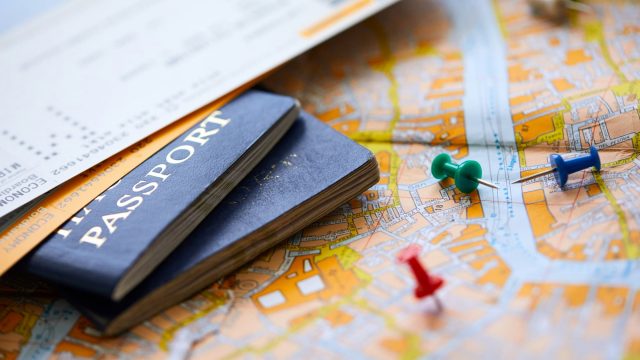Flying with children is never straightforward. Now more so than ever before! Modern day parents are overrun with gadgets and gizmos to keep children comfortable and entertained. With an endless list of things to remember to pack, it’s a wonder you don’t forget to bring your offspring! So, if you are planning on travelling with a baby, Economy Car Hire has come up with a checklist to help keep you organised.
Pre-boarding
Push chairs and car seats can usually be checked-in free of charge. It is advisable to check with your airline first though! You are usually allowed to take your buggy all the way to the gate, where it will then be put in the hold.
Your car seat however must be handed over at check in, unless you have booked an extra seat for baby and are planning to use it on the plane. For this reason, lots of parent bloggers have recommended bringing a baby sling or carrier to transport your child around the airport. They are of course less cumbersome than a car seat.
Packing
In my bag I have… Extra of everything! While travelling light is always a priority, don’t stress about it too much when packing for a baby. Extra nappies, wipes, clothes, milk, snacks, and toys are all recommended necessities to ensure your child’s comfort whilst flying.
If you are travelling long haul then don’t forget to pack a clean change of clothes for yourself. If you are comfortable then your baby is more likely to be too. Try and keep things compartmentalised in your bag. Separate food, toys, clothes, and nappy changing items to make it easier to retrieve what you’re looking for without unpacking everything!
As I am sure you are already aware, babies are typically sensitive to unusual sounds and sensations along with the changing pressure of the cabin of take-off and landing. For the big kids on board, boiled sweets are a popular choice to relieve popping ears, but a dummy or a bottle to suck on should help settle your baby.
Feeding
Baby food and milk, either breast or powdered, is allowed in your hand luggage. You will probably be asked to try it when going through security, so it might be an idea to bring extra. Boots also do a pre-order and collection service at most major airports. This means that you can pick up baby’s dinner on your way to the gate to avoid wasting bottles and jars.
Bottle feeding seems to be the most comfortable way to feed your child whilst flying. This is due to space restrictions and potentially close quarters with your neighbours! That said, if you are planning on breastfeeding, bring along something to drape over your baby. This will keep both of you covered and prevent complaint from intolerant or unsympathetic passengers. Flight attendants are also always happy to help and can provide warm water for milk bottles and baby food so don’t be afraid to ask! Calpol and ibuprofen sachets can be taken on board (just in case) as well.
Sleeping
Attempting to settle a baby in a cramped space is a challenge most parents seem to struggle with. Some bloggers recommend booking a window and an aisle seat in the same row for you and your partner. This is in the hope that the middle seat will be left free, giving you a space to lie your baby down. Night flights tend to be quieter and the lights are turned down lower for a more relaxing sleeping environment. The timing is also less likely to disrupt your child’s routine and ensure they nap through the journey.
Sleeping bags or sleep-suits are also a popular light-weight sleeping accessory. These can be kept in your hand luggage when flying to keep baby comfy. To avoid your child becoming too hot or too cold, other parents suggest you dress your child in layers to make it easy to monitor his or her temperature without too much disruption. A favourite toy or blanket is a travel must for most children. The smell or feel of something familiar should help keep them settled when dealing with the unfamiliar sensations and sounds of flying.
Seating
Most airlines advise that children under 2 years old or under 40lb can travel on an infant ticket. This means they will be sat in your lap with an extension seatbelt. This is where a baby sling or carrier will come in handy again. This will ensure both you and your child are seated in a comfortable position. If you are bringing a car seat for baby to travel in then you will need to book an extra seat and let the airline know. Flight attendants should help you fit your seat as securely as possible.
Most airlines allow parents flying with babies and small children to reserve seats in the more spacious child friendly areas of the plane. They also usually offer baby seats or travel cots free of charge when you book a seat for your child. These are available on a first come first serve basis, so make sure you arrive at check-in early.
Check out our online guide for more information regarding restrictions and allowances when travelling with your own child car seat.
One of the things new parents learn very quickly is that everyone has an opinion on how to be a parent whether they have children or not! Ultimately, only you can decide what is best for your child but hopefully these tips will help you to keep organised when travelling with baby.
If you have experience travelling with small children and think we have forgotten something vital, don’t forget to comment below with your top tip for travelling with a baby!





